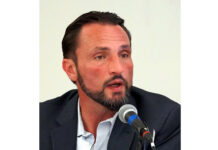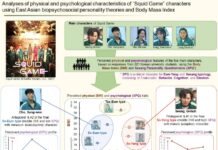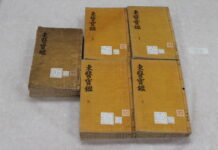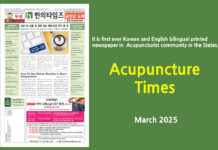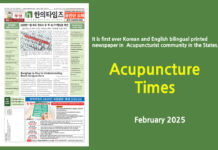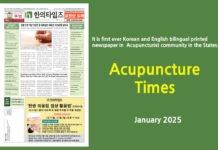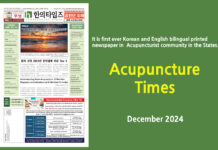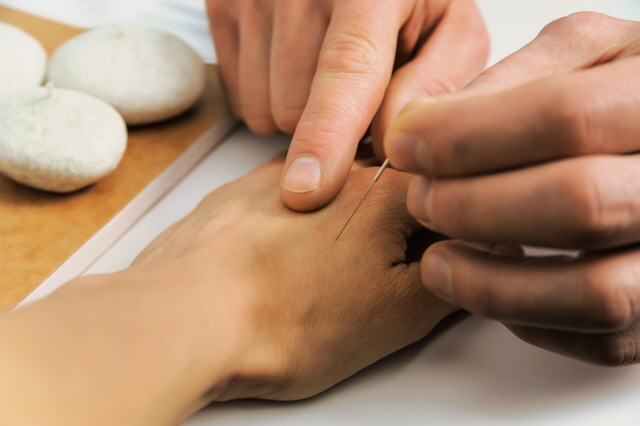Written by
- Sanghoon Lee, KMD, MPH, PhD, DiplAc, LAc Professor, Department of Acupuncture and Moxibustion, College of Korean Medicine Kyunghee university
- Dongwoo Nam, KMD, PhD Assistant Professor, Department of Acupuncture and Moxibustion, College of Korean Medicine Kyunghee university
- Jeongmin Ko, KMD, Dr.Jeongmin Ko’s Korean Medicine Clinic (Inc.) All that Korean Medicine
- Hyojung Kwon, KMD, PhD (Inc.) All that Korean Medicine
- Seung Min Kathy Lee, KMD, PhD, Research Fellow Department of Acupuncture and Moxibustion, College of Korean Medicine Kyung Hee University
- Park Jun Hyeong, KMD, MS, Researcher, Department of Acupuncture and Moxibustion, College of Korean Medicine
Kyung Hee University
Published in December 2017 by Korean Society of Acupuncture & Moxibustion Society
1) Obstacles in the development of Korean Acupuncture
With Korean Medicine becoming an integral part of national healthcare, along came governmental regulations. The Korean Ministry of Health and Welfare officially issued licenses to those who met the aforementioned standards, but for the other acupuncturists who had received their licenses way before such regulations were implemented, many restrictions took place. This meant that traditional acupuncture techniques that were being passed down through private apprenticeships, and those
not taught in Korean Medicine universities were being lost.
Hence in 2005, The Korean Institute of Oriental Medicine (KIOM) embarked on a nationwide project to excavate traditional medicine related theories and techniques and to gather information on different kinds of Korean Medicine treatments being used by current acupuncturists or Korean Medicine doctors. The project went on for 4 years, and in 2009, the official report was published. Only those with clinical efficacy, adequate safety profiles, potential for future research, and those not commonly used in Korean Medicine colleges today, were selected. A total of 29 types of treatment were introduced (Table 1).9)
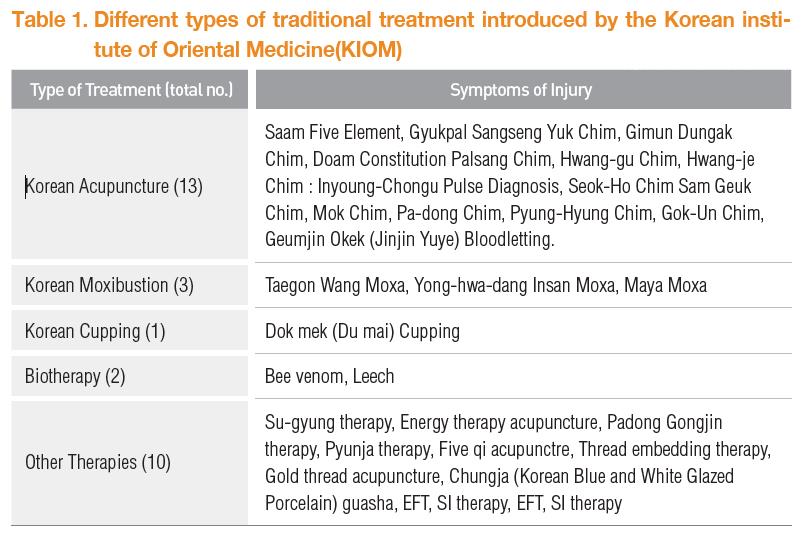
2) Obstacles in the expansion of Korean Acupuncture
Unlike the Chinese or Japanese, not many Koreans emigrated into Western countries during the first half of the 20th century. Before colonization (1910), the Korean emperor prohibited emigration of Koreans except for a few laborers to Hawaii and during the Japanese colonial period (1910-1945), the Japanese did not issue passports to Koreans. If Koreans were sent abroad, it was usually to countries within the immediate vicinity, countries such as China, Japan, and Russia. During the Korean war (1950-1953), the country was poverty-stricken and a large number of Koreans were adopted into Western families, mostly as orphans.
3) Development and expansion of Korean Acupuncture
In 1962, the Korean government embarked on an Overseas Emigration Project to bring foreign currency into the country. Volunteers were mostly nurses and miners, and they were actively recruited and sent to countries such as West Germany and
South America. This is when Korean Acupuncture is also believed to have migrated abroad. Through the help of immigrants that settled down in different countries and also the difficult circumstances for unlicensed acupuncturists in Korea, unique Korean acupuncture theories and techniques have been introduced and have become popular in the West. These include Korean Hand Acupuncture and Korean Four Needle Technique.
Korean Hand Acupuncture (Koryo Sooji Chim)
The group of people taking credit for having introduced Korean style acupuncture in the West are largely emigrants from Korea. In Korea, acupuncture could only be used by Korean Medicine doctors, and licensed acupuncturists from the previous
generation or those who lacked the required medical degrees and was without an official license to practice, rapidly lost their place in Korean national healthcare. It is also believed that the nurses who were sent to West Germany during Overseas Emigration Project learned simple acupuncture techniques to use in their new country.
Among the acupuncture theories that were easy to learn, Korean hand acupuncture was especially popular. Korean hand acupuncture is also known as Koryo Sooji Chim and was a convenient form of treatment method that was first developed by Tae-Woo Yoo10), an acupuncturist but not a licensed Korean Medicine doctor.
Korean hand acupuncture emphasizes that the hand reflects the whole body and that point on the hand can be used to effectively regulate internal problems, pain, and more. The corresponding points in the hand can be stimulated using small acupuncture needles, press-pellets, magnets, and moxibustion as well.
Saam acupuncture (Korean Four Needle Technique)
Four point acupuncture is more famously known as Saam acupuncture, and it was first developed almost 400 years ago by a Buddhist monk called Saam Do In. Not much is known about Saam, but his acupuncture theories have survived. His disciples
have passed the theories on by compiling theories and clinical experiences into books.
In the 1980s, Hong Kyeong Kim11), a licensed Korean Medicine doctor studied Saam acupuncture and re-interpreted many of the theories, popularizing it among Korean Medicine doctors. Thus, its use have been largely limited to Korean Medicine doctors in Korea but because of its clinical efficacy and safety, it is one of the most popular types of Korean Acupuncture techniques used by Korean Medicine doctors today. As is the name, it uses four points among the five shu points to regulate imbalances in the body. More information is provided in the following chapters below.


